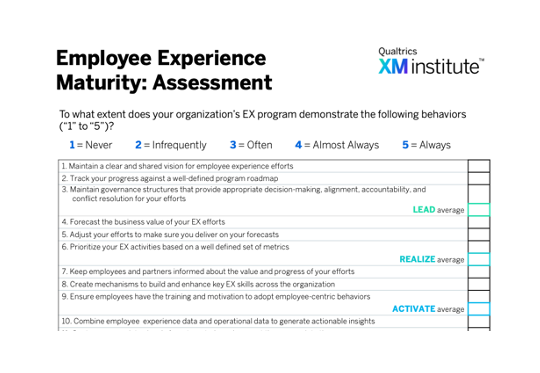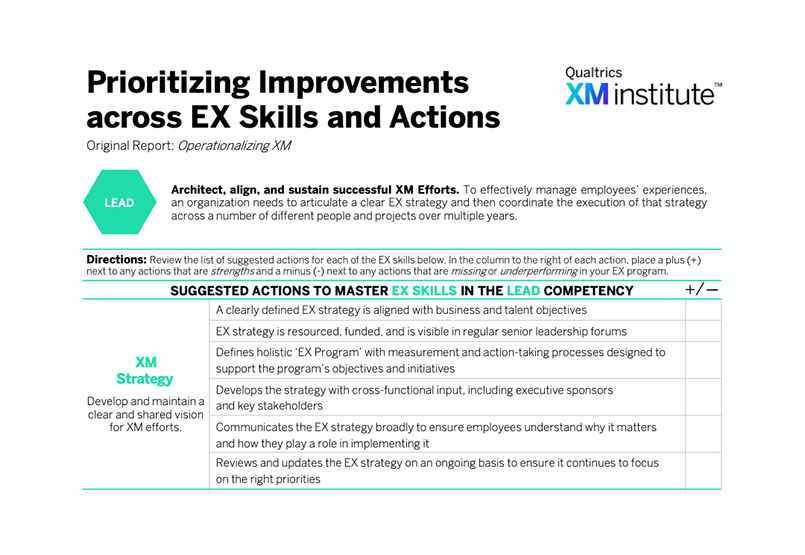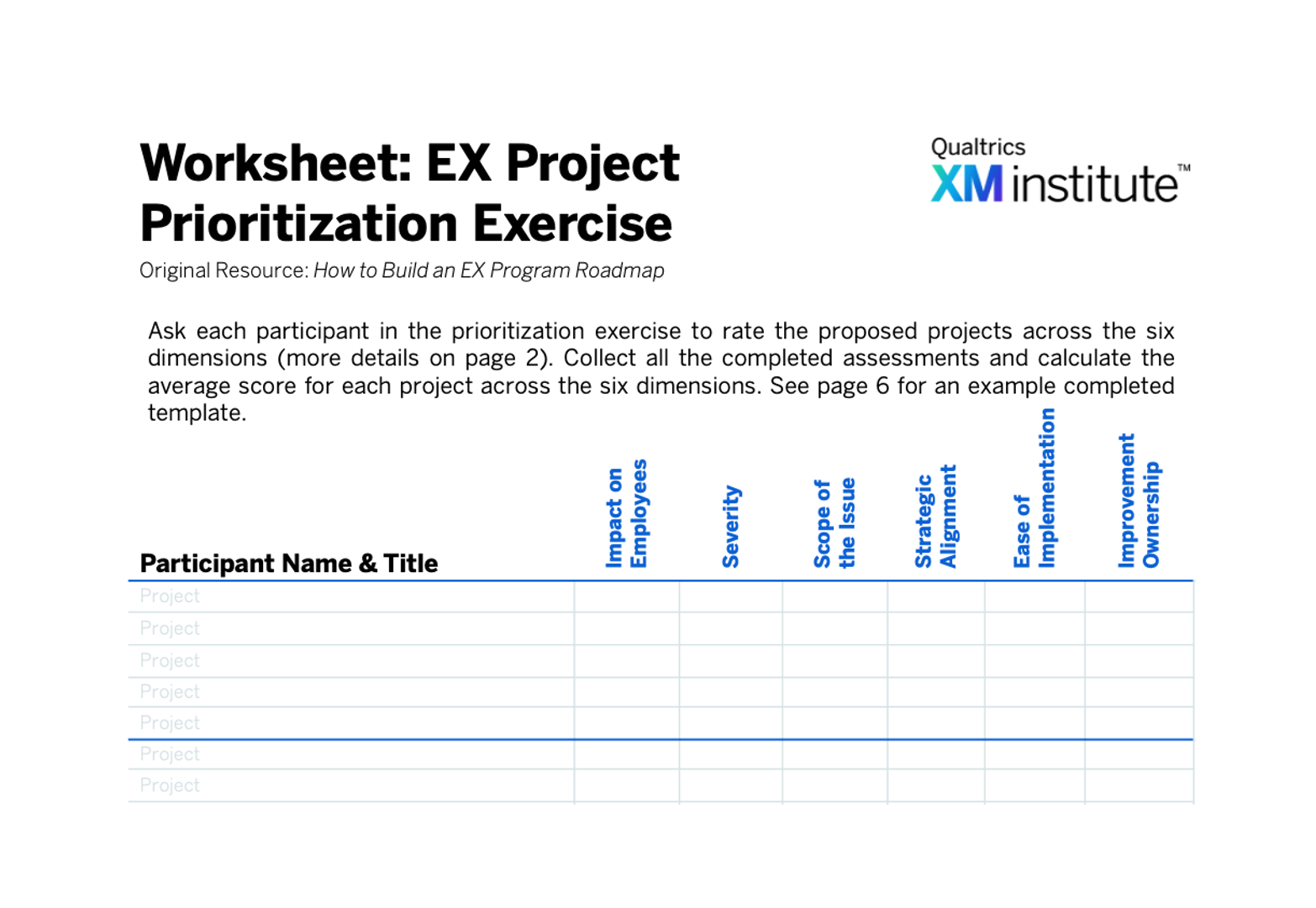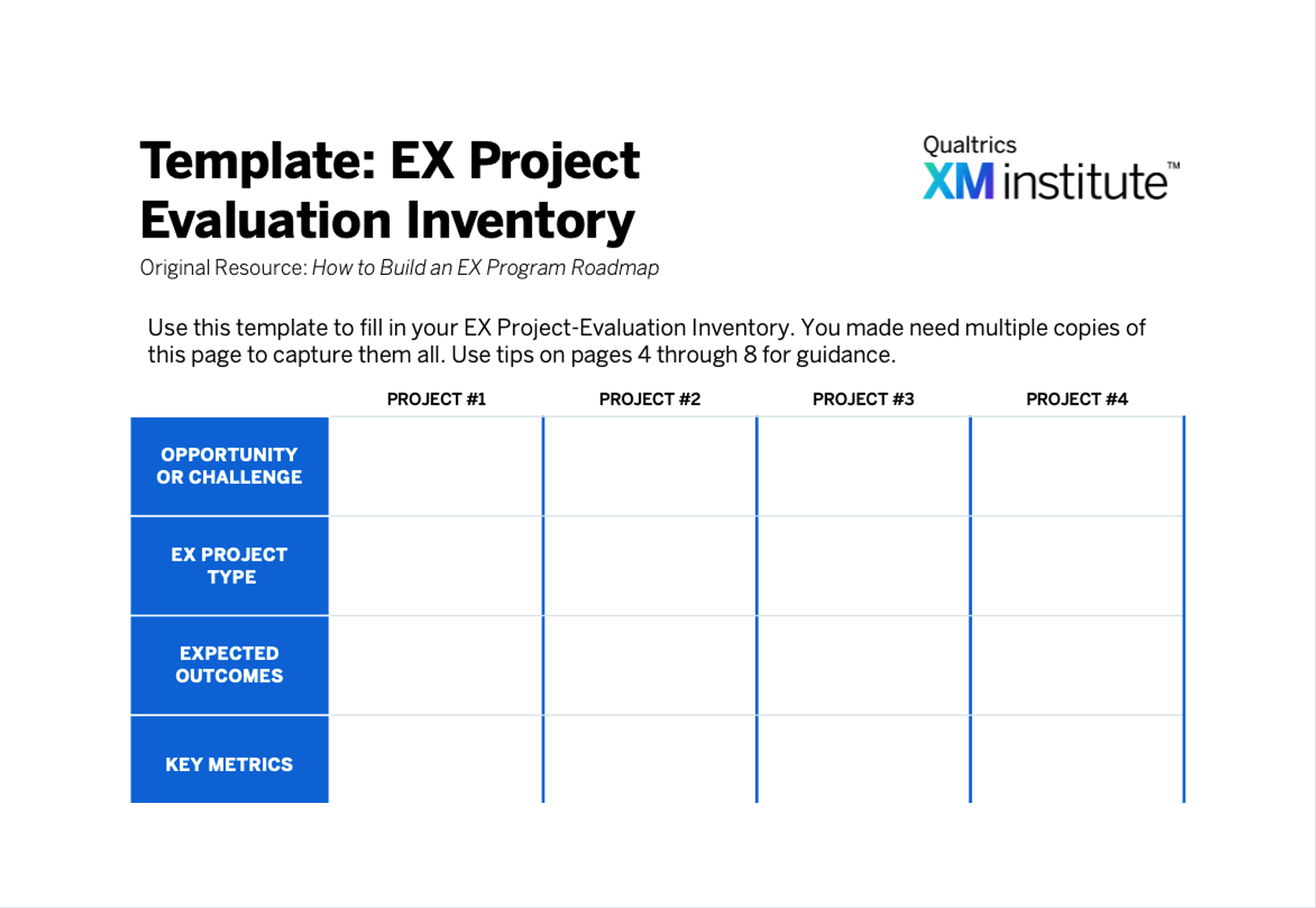Use this Launchpad as a starting place to understand what employee experience (EX) management is, why it’s important, and how you can start building your organization’s EX management capabilities. Then explore the key resources included at the bottom of the page to expand your EX knowledge.
The Fundamentals
Employee experience (EX) is defined as:
the perceptions that employees have of their collective interactions with their employers
The word “perceptions” here is critical. Experiences are in the eye of the beholder, which means that these perceptions – whether they are positive or negative – are going to impact employees’ behaviors towards the business, like whether they work harder, collaborate more, or make recommendations for improvements that impact organizational performance.
EX management is part of the larger discipline of Experience Management (XM). In today’s rapidly changing business landscape, XM is essential to organizational success as it enables companies to continuously learn how people are thinking and feeling, propagate insights to the right people in the right form at the right time, and then rapidly adapt their business based on an increasing flow of actionable insights. When the discipline of XM is applied to employees, it is often called EX Management.
While HR can – and should – lead many aspects of EX management, successful EX efforts will touch all employees and people managers. To master EX management, companies should adopt the XM Operating Framework, which is built on a combination of Technology, Culture, and six Competencies. These six XM Competencies are developed through a set of 20 Skills – three or four Skills under each Competency:
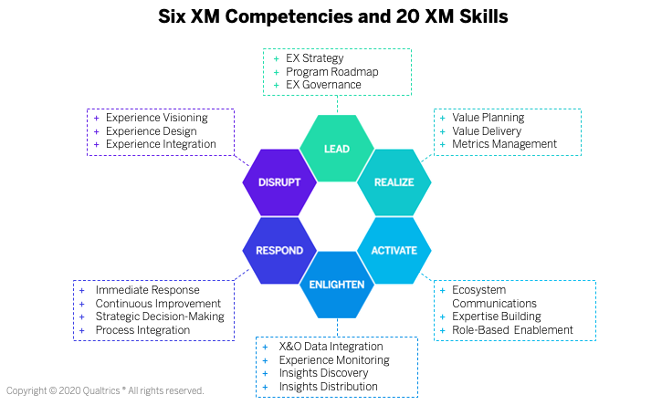
Listening Elements of an EX Program
EX programs often contain the following employee listening elements:
Engagement Surveys
These surveys are a traditional, robust measure of employee engagement and the organizational practices that drive engagement and are typically conducted annually.
Lifecycle Survey
These surveys are event-based, standardized measures of the employee experience at key moments, such as onboarding, promotion, post-parental leave, and exit.
Pulse Survey
These surveys capture a regular, structured measurement of employee attitudes.
Ad-hoc Survey
These surveys capture just-in-time employee feedback and are best targeted at instances when employees will expect to give feedback, such as on customer-facing initiatives, organizational changes, or roll-out of internal programs or policies.
Always-on Feedback
This type of feedback is an on-demand, anonymous channel for employees to provide feedback, offer insights, and raise issues.
Multi-rater Assessments
These individual, employee-focused assessments can range from pure self-development to formal performance appraisal.
Tips for Taking Action
How can an organization successfully adopt the business discipline of EX Management? Here are a few key elements for success:
Chart your EX maturity roadmap
Use the XM Institute’s EX Competency & Maturity Assessment to identify your organization’s strengths and weaknesses. Then, build a roadmap to navigate the five stages of EX maturity. Repeat the Assessment every 6-12 months to identify key areas of focus.
Make the business case
Although external research demonstrates the connection between EX and business outcomes, many business leaders still need to see a direct link for their particular organizations. Start by identifying the employee behaviors that are most closely aligned to the company’s KPIs and the associated employee attitudes (e.g. engagement, commitment) that drive those behaviors. Then create a simple, visual model of how EX attitudes and behaviors will impact the company KPIs.
Focus on improvements; not measurements
When companies obsess over an EX metric rather than using the score to drive improvements, their progress toward EX maturity can stall. To avoid that – and keep the focus on EX improvements and resulting business outcomes – leaders should always ask two questions whenever their team presents EX metrics: “What have we learned?” and “What improvements are we making?”
Propel EX across the organization
Every leader in the organization – from senior executives to front-line managers – plays a role in building exceptional employee experiences. Consider teaching all people leaders how to internalize the Five I’s of Employee Engagement: Inform, Inspire, Instruct, Involve, and Incent.
Put the basics in place
If your organization has not formally measured EX before, the annual employee engagement survey is a great place to start. Conducting this survey can help build trust and buy-in among employees and leaders (as long as you act on what you learn). As a next step, introduce lifecycle surveys to capture insights at universal moments, such as the candidate and new hire experiences.







